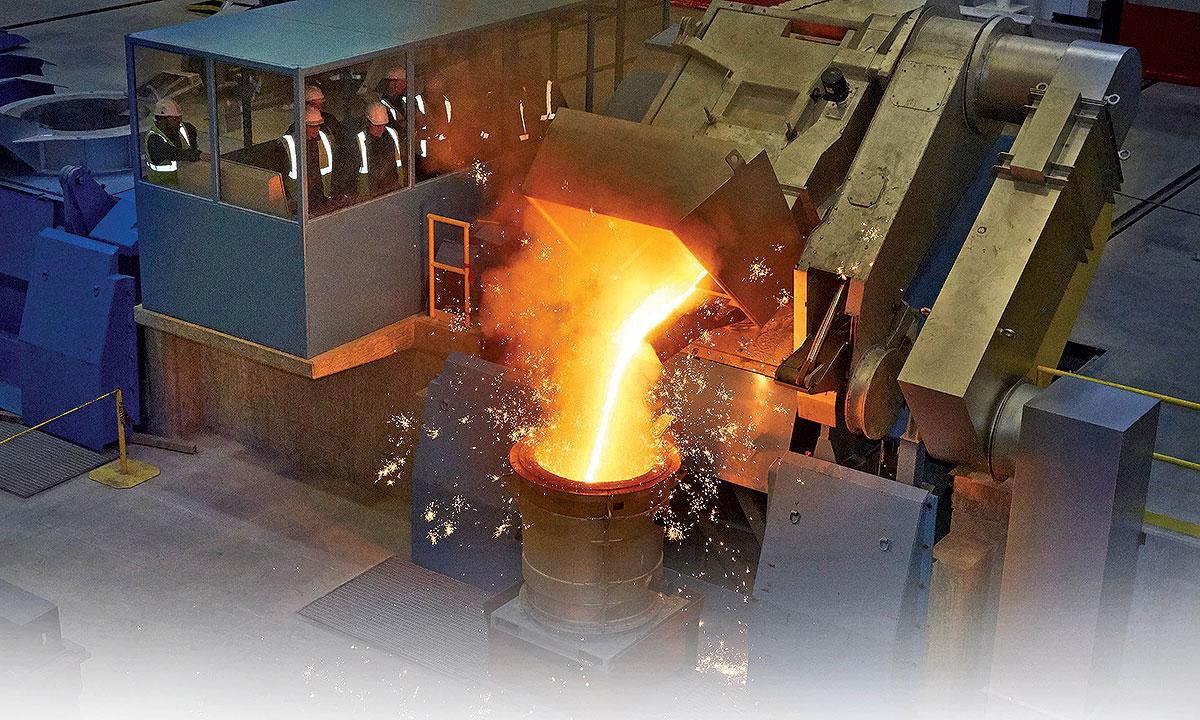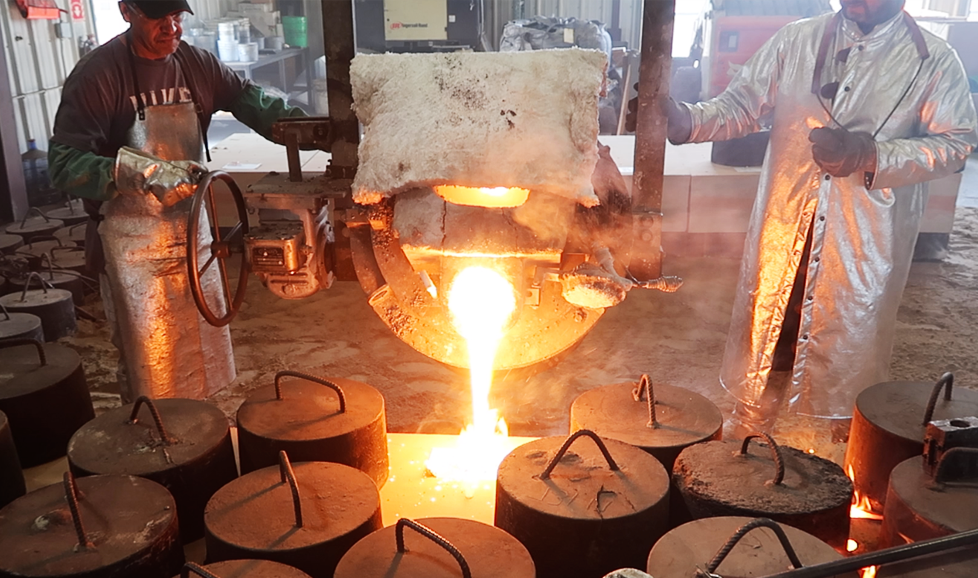A Deep Dive into How a Metal Foundry Functions
Wiki Article
Understanding Metal Casting Procedures: Developments and Trends in the Foundry Sector
The foundry sector is experiencing substantial changes driven by technological developments. Developments such as 3D printing and expert system are reshaping steel casting procedures, improving effectiveness and precision. Sustainable practices are obtaining grip, highlighting the importance of environmental duty. In enhancement, the intro of advanced products and automation is boosting general casting quality. These developments recommend a crucial shift in the industry, elevating concerns concerning future instructions and implications for producers.Improvements in 3D Printing for Metal Casting
Recent innovations in 3D printing innovation have actually significantly changed the landscape of metal casting. The integration of additive production methods has actually allowed the rapid production of complicated patterns and mold and mildews that were difficult or previously tough to achieve with standard approaches. By utilizing materials such as sand and steel powders, manufacturers can produce intricate geometries that improve layout flexibility and lower product waste. This development not only expedites the prototyping process yet also permits for the customization of elements tailored to details applications.
3D printing facilitates shorter lead times, which is crucial in industries needing fast turn-around for components. The innovation likewise supports the production of light-weight structures, thereby enhancing energy effectiveness in end items. Consequently, the foundry sector is witnessing a shift towards more sustainable methods, driven by the effectiveness and precision used by these contemporary 3D printing methods in steel casting procedures.
The Function of Artificial Knowledge in Precision Manufacturing
As industries progressively take on innovative manufacturing innovations, expert system (AI) is playing a pivotal role in improving precision manufacturing procedures. AI formulas assess huge datasets to maximize and identify patterns production specifications, resulting in enhanced accuracy and efficiency. In metal casting, AI help in anticipating maintenance, decreasing downtime by forecasting equipment failings prior to they take place.AI-driven simulations make it possible for suppliers to design the casting process, refining layouts and decreasing flaws. Artificial intelligence techniques boost quality assurance by detecting abnormalities in real-time, consequently ensuring that only products fulfilling rigid specifications continue via the assembly line.

Sustainable Practices in the Foundry Industry
Sustainability has become a vital emphasis in the foundry market, motivating manufacturers to adopt practices that reduce environmental impact while maintaining productivity - Metal Casting. One famous approach includes the recycling of materials, particularly steels, which substantially lowers waste and power usage. Factories are increasingly carrying out closed-loop systems, permitting the reuse of sand and various other casting materials, thus decreasing the demand for virgin sourcesOn top of that, energy-efficient innovations, such as electrical heaters, are obtaining grip, as they lower greenhouse gas emissions contrasted to standard techniques. Several shops are exploring the use of naturally degradable binders and green finishings to lower poisonous byproducts. Staff member training on sustainable practices has actually additionally ended up being essential, cultivating a culture of ecological obligation within companies. On the whole, these sustainable methods not just add to ecological preservation but also enhance the long-lasting viability of the foundry industry in a progressively eco-conscious market.
Innovations in Products for Improved Casting High Quality
With the continual development of the foundry market, technologies in materials have come to be vital for boosting casting high quality. Advanced alloys and composite materials are progressively being used to improve mechanical residential or commercial properties and minimize flaws in castings. These products typically offer superior strength-to-weight proportions and boosted resistance to deterioration and wear, resolving the needs of contemporary applications.Furthermore, the unification of nanomaterials is getting grip, permitting finer microstructures that cause boosted surface area finishes and dimensional precision. Metal Casting. 3D printing innovations likewise contribute in producing complicated geometries with very little waste, making it possible for using customized materials that were formerly challenging to cast
The growth of environmentally pleasant binders and ingredients contributes to sustainable methods while maintaining top quality outcomes. Jointly, these technologies not just improve the performance of actors products yet also line up with the sector's change in the direction of sustainability and performance.
Automation and Robotics in Metal Casting Procedures
Automation and robotics are revolutionizing metal casting procedures by boosting and simplifying operations precision. In modern factories, robotic systems are employed for jobs such as mold and mildew handling, putting, and ending up, considerably reducing human intervention. This not only minimizes the danger of mishaps but also ensures constant high quality in production.Automation innovations, such as computer system mathematical control (CNC) machines, help with detailed layouts and complex geometries that were previously challenging to achieve. Real-time information analytics make it possible for makers to maximize and keep track of processes efficiency continually.
The integration of automation leads to raised productivity and efficiency, permitting shops to fulfill expanding market demands while minimizing lead times. As the industry accepts these improvements, the labor force is likewise evolving, needing brand-new skills to run and keep advanced equipment. Overall, the fostering of automation and robotics is a critical fad shaping the future of metal casting processes.
Often Asked Inquiries
What Is the Background of Metal Casting Strategies?
Metal casting strategies date back to ancient people, with evidence of bronze casting in Mesopotamia around 3000 BCE. Over centuries, techniques advanced significantly, integrating improvements in products and technology, forming contemporary commercial practices.How Does Metal Casting Impact the Setting?
Metal casting substantially affects the environment via power consumption, emissions, and waste generation. Innovations in lasting practices and modern technologies aim to mitigate these results, promoting even more ecologically pleasant approaches within the market.What Precaution Are Vital in Foundries?

What Prevail Issues in Metal Casting Products?
Usual issues in steel casting products include porosity, shrinking, misruns, chilly shuts, and surface imperfections. These concerns emerge from aspects such as incorrect temperature control, inadequate mold and mildew style, and contamination during the casting process.How Do Foundries Ensure Quality Control in Casting Processes?
Foundries apply strenuous top quality control procedures with routine assessments, standard testing, procedure tracking, and adherence to sector criteria. These practices help recognize problems early, ensuring the honesty and integrity of the final casting products.Innovations such as 3D printing and fabricated knowledge are reshaping steel casting processes, enhancing Aluminum Foundry efficiency and precision. Recent advancements in 3D printing technology have significantly changed the landscape of metal casting. Automation and robotics are changing metal casting procedures by streamlining operations and boosting precision. Metal casting strategies date back to old civilizations, with proof of bronze casting in Mesopotamia around 3000 BCE. Typical defects in metal casting items consist of porosity, shrinking, misruns, cool shuts, and surface flaws.
Report this wiki page